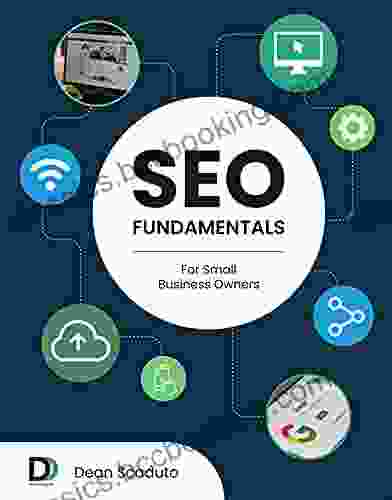How to Resolve Your Most Emotionally Charged Conflicts

Conflicts are an inevitable part of life, and while some can be easily resolved, others can be highly emotional and challenging. When emotions run high, it can be difficult to think clearly, communicate effectively, and find a mutually acceptable solution. This comprehensive guide will provide you with proven strategies and techniques to effectively resolve emotionally charged conflicts and strengthen your relationships.
4.6 out of 5
| Language | : | English |
| File size | : | 4680 KB |
| Text-to-Speech | : | Enabled |
| Screen Reader | : | Supported |
| X-Ray | : | Enabled |
| Word Wise | : | Enabled |
| Print length | : | 350 pages |
Understanding the Nature of Conflict
The first step to resolving conflict is understanding its nature. Conflicts can arise from various sources, including differences in values, beliefs, goals, and perceptions. It's important to recognize that conflict is not inherently bad. It can provide an opportunity for growth, creativity, and problem-solving.
The Impact of Emotions on Conflict
Emotions play a significant role in conflicts. When we feel threatened, angry, or defensive, our ability to think rationally and communicate effectively is compromised. Emotions can cloud our judgment, making it difficult to see the other person's perspective and find a solution.
Strategies for Resolving Emotional Conflicts
Resolving emotionally charged conflicts requires a combination of emotional intelligence, communication skills, and negotiation techniques. Here are some effective strategies:
1. Stay Calm and Composed
In the midst of an emotionally charged conflict, it's crucial to maintain your composure. Take deep breaths, slow down your speech, and avoid using accusatory or inflammatory language. Staying calm will help you think clearly and communicate your thoughts and feelings effectively.
2. Active Listening
Truly listen to the other person's perspective. Avoid interrupting, and try to understand their emotional state. By actively listening, you can demonstrate empathy and show that you value their feelings.
3. Identify Common Ground
Search for areas of agreement, even if they seem small. Identifying common ground can help build a bridge between you and the other person and make it easier to find a mutually acceptable solution.
4. Focus on Solutions, Not Blame
Instead of dwelling on who's right or wrong, shift the focus towards finding a solution that works for both parties. Be willing to compromise and find a win-win solution.
5. Use "I" Statements
When expressing your thoughts and feelings, use "I" statements. This helps you take ownership of your emotions and avoid blaming the other person. For example, instead of saying "You always interrupt me," try saying "I feel frustrated when I'm interrupted."
6. Seek Professional Help if Needed
If you're consistently struggling to resolve emotional conflicts, consider seeking professional help from a therapist or counselor. They can provide an impartial and objective perspective, facilitate communication, and help you develop coping mechanisms.
Real-World Examples
To illustrate the effectiveness of these strategies, here are two real-world examples:
Example 1: Conflict Between a Parent and a Teenager
A parent and their teenager are arguing about curfew. The teenager wants to be able to stay out later, while the parent is concerned about their safety.
Using the strategies outlined in this guide, the parent and teenager can resolve their conflict by:
* Staying calm and composed * Actively listening to each other's perspectives * Identifying common ground, such as the teenager's desire for independence and the parent's responsibility for their safety * Focusing on solutions, such as agreeing on a compromise curfew or discussing alternative ways for the teenager to demonstrate responsibility * Using "I" statements, such as "I feel concerned when you stay out late" and "I want you to have a sense of independence"
Example 2: Conflict Between Colleagues
Two colleagues have a disagreement about a project timeline. One colleague wants to extend the deadline, while the other is adamant about meeting the original deadline.
To resolve this conflict, the colleagues can:
* Stay calm and composed, even though their emotions are running high * Actively listen to each other's perspectives and understand their underlying concerns * Identify common ground, such as the importance of delivering high-quality work * Focus on solutions, such as exploring alternative ways to meet the deadline or adjusting the scope of the project * Use "I" statements, such as "I feel overwhelmed with the current timeline" and "I want to make sure we deliver our best work"
Resolving emotionally charged conflicts can be challenging, but by understanding the nature of conflict, recognizing the impact of emotions, and applying the strategies outlined in this guide, you can effectively navigate these challenges and strengthen your relationships. Remember, the key to successful conflict resolution is to stay calm, listen actively, identify common ground, focus on solutions, and use "I" statements. By implementing these strategies, you can transform emotionally charged conflicts into opportunities for growth and connection.
4.6 out of 5
| Language | : | English |
| File size | : | 4680 KB |
| Text-to-Speech | : | Enabled |
| Screen Reader | : | Supported |
| X-Ray | : | Enabled |
| Word Wise | : | Enabled |
| Print length | : | 350 pages |
Do you want to contribute by writing guest posts on this blog?
Please contact us and send us a resume of previous articles that you have written.
 Book
Book Novel
Novel Page
Page Chapter
Chapter Text
Text Story
Story Genre
Genre Reader
Reader Library
Library Paperback
Paperback E-book
E-book Magazine
Magazine Newspaper
Newspaper Paragraph
Paragraph Sentence
Sentence Bookmark
Bookmark Shelf
Shelf Glossary
Glossary Bibliography
Bibliography Foreword
Foreword Preface
Preface Synopsis
Synopsis Annotation
Annotation Footnote
Footnote Manuscript
Manuscript Scroll
Scroll Codex
Codex Tome
Tome Bestseller
Bestseller Classics
Classics Library card
Library card Narrative
Narrative Biography
Biography Autobiography
Autobiography Memoir
Memoir Reference
Reference Encyclopedia
Encyclopedia Dawn Pruchniak
Dawn Pruchniak David Lloyd Kilmer
David Lloyd Kilmer David Rock
David Rock Darren Varndell
Darren Varndell Dave Ulrich
Dave Ulrich David Mcgriffy
David Mcgriffy Dave Edwards
Dave Edwards David Bassanese
David Bassanese David Housewright
David Housewright David V Jervis
David V Jervis Dayton O Hyde
Dayton O Hyde Darwyn Cooke
Darwyn Cooke David Beers
David Beers David Pleasance
David Pleasance David Shoemaker
David Shoemaker Deborah Ellis
Deborah Ellis David A Fields
David A Fields Deanne Stillman
Deanne Stillman Danny Chaplin
Danny Chaplin Danielle Bernstein
Danielle Bernstein
Light bulbAdvertise smarter! Our strategic ad space ensures maximum exposure. Reserve your spot today!

 Jimmy ButlerUnveiling the Heartbreaking Truth: "Behind Closed Doors: A Daughter's Story"...
Jimmy ButlerUnveiling the Heartbreaking Truth: "Behind Closed Doors: A Daughter's Story"... Ronald SimmonsFollow ·18k
Ronald SimmonsFollow ·18k Noah BlairFollow ·12.8k
Noah BlairFollow ·12.8k Grayson BellFollow ·10.1k
Grayson BellFollow ·10.1k Edison MitchellFollow ·13.8k
Edison MitchellFollow ·13.8k Derek BellFollow ·18k
Derek BellFollow ·18k Billy PetersonFollow ·2.4k
Billy PetersonFollow ·2.4k Jackson HayesFollow ·10.3k
Jackson HayesFollow ·10.3k Galen PowellFollow ·11.3k
Galen PowellFollow ·11.3k

 Cameron Reed
Cameron ReedHow to Know When Language Deceives You
Unmasking the Power of...

 Robbie Carter
Robbie Carter50 Things To Know About Planning Home Schooling...
: The Power of Hands-On Learning Embarking...

 Julio Cortázar
Julio CortázarCalculus: Single and Multivariable, 8th Edition — The...
Calculus is the...

 Jaime Mitchell
Jaime MitchellBunnicula and Friends: A Spooktacular Tale of Mystery and...
In the quaint little town of Celeryville,...

 Josh Carter
Josh CarterPeppa Easter Egg Hunt: Join Peppa Pig on an...
Get ready for...

 Donovan Carter
Donovan CarterBoy Called Dickens: A Journey into the Childhood of a...
Delving into the...
4.6 out of 5
| Language | : | English |
| File size | : | 4680 KB |
| Text-to-Speech | : | Enabled |
| Screen Reader | : | Supported |
| X-Ray | : | Enabled |
| Word Wise | : | Enabled |
| Print length | : | 350 pages |










